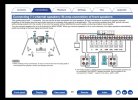Dear FMs,
I stumbled upon this link today after watching a video on Bi-Amping AVRs. I never knew it was possible. Now I have a few questions to give it a try myself.
LINK - https://manuals.denon.com/AVRX3700H/NA/EN/DRDZSYjjvfnaio.php
1 - If I buy-amp my speakers using the Height terminals at the back of the AVR, what settings do I have to change in my AVR - to use the bi-amping, rather than sending two types of signals to my Fronts?
2 - Does the bi-amping from the AVR have any detrimental effect on the sound?
Thanks!
I stumbled upon this link today after watching a video on Bi-Amping AVRs. I never knew it was possible. Now I have a few questions to give it a try myself.
LINK - https://manuals.denon.com/AVRX3700H/NA/EN/DRDZSYjjvfnaio.php
1 - If I buy-amp my speakers using the Height terminals at the back of the AVR, what settings do I have to change in my AVR - to use the bi-amping, rather than sending two types of signals to my Fronts?
2 - Does the bi-amping from the AVR have any detrimental effect on the sound?
Thanks!


